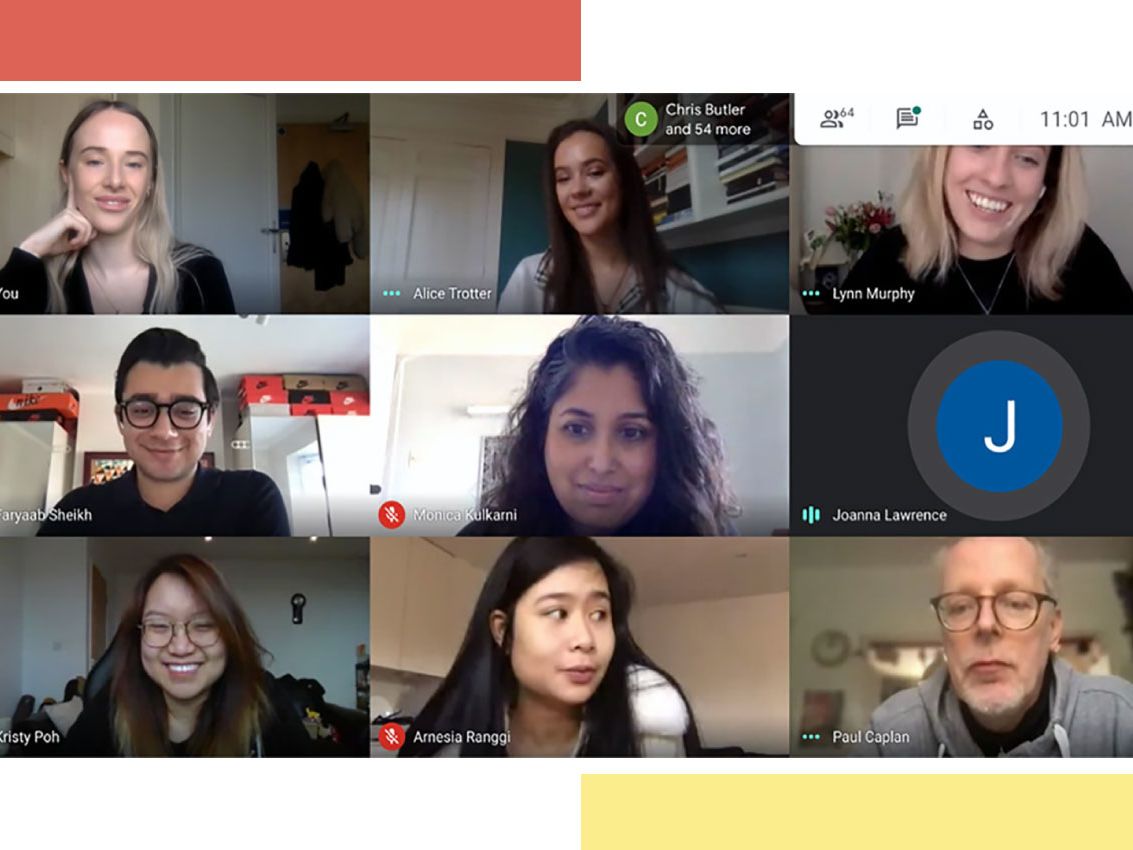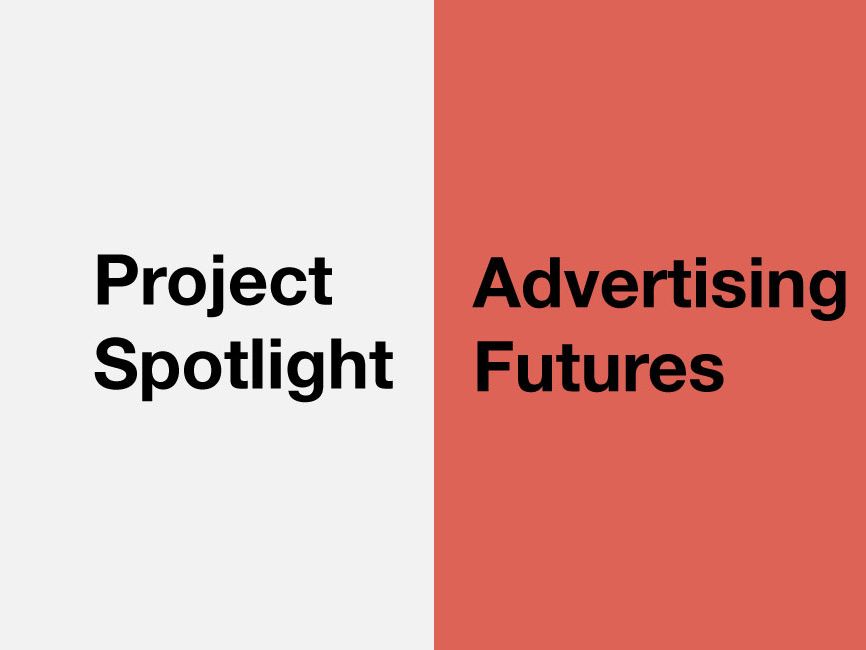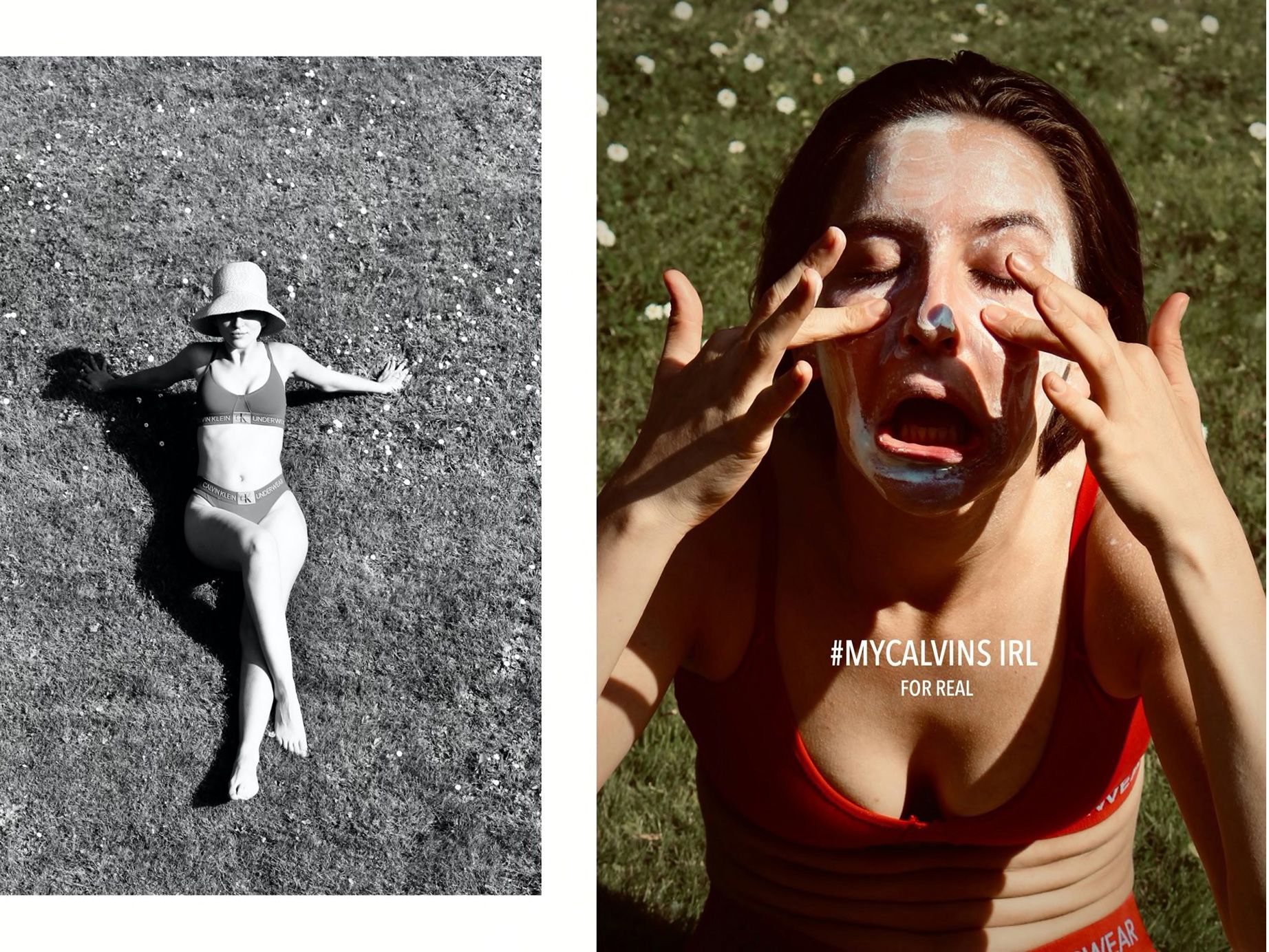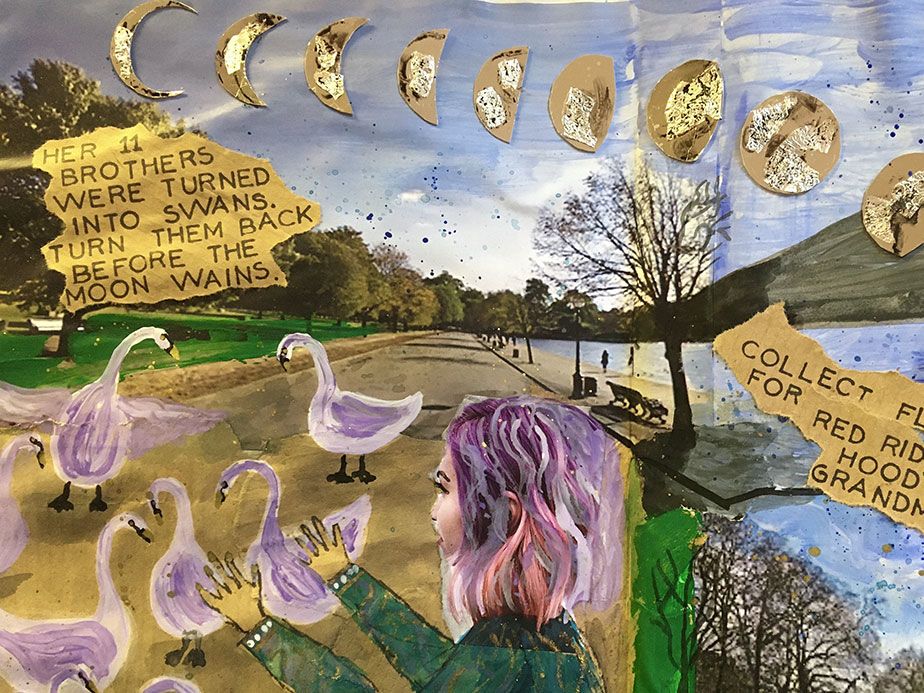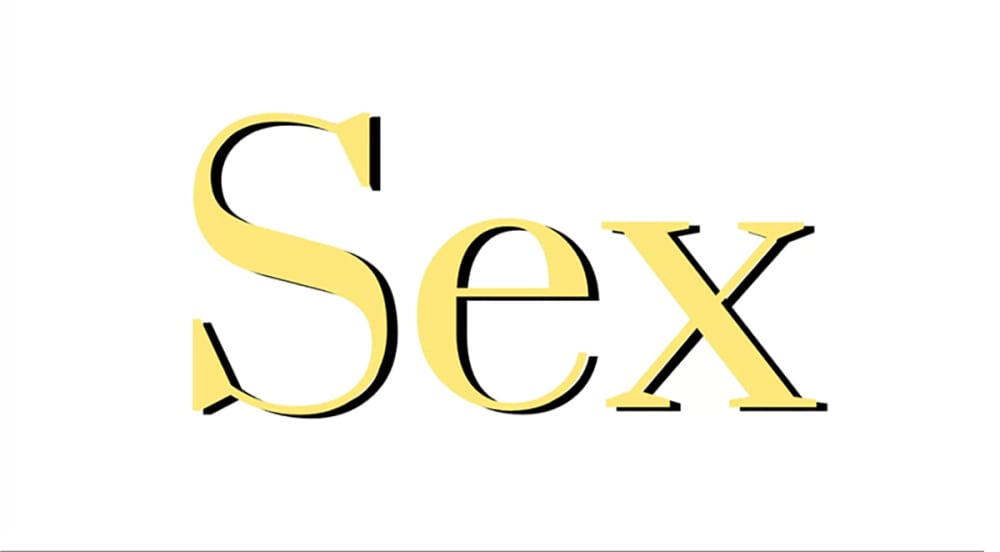
Project Spotlight: Advertising Futures
- Written byChloe Murphy
- Published date 21 May 2021
The advertising landscape reflects and grows in parallel with the changing world around us. As demographics shift and diversify, and technology continues to develop at a rapid pace, advertisers must adapt and evolve in order to connect with audiences in creative, innovative and meaningful ways.
As part of their Advertising Futures unit, MA Advertising students at London College of Communication (LCC) recently collaborated with The Telegraph to develop a range of concepts aimed at promoting its Technology Intelligence channel as 'a brilliantly effective place to advertise [...] brands'.
Bringing together academic knowledge with imagination and creativity, they worked in small groups to develop and pitch their own speculative fictions which explored and envisioned potential avenues for a future-facing industry.
We caught up with students from one of the winning teams, Alice Trotter, Connie Lowman and Lynn Murphy, to discuss the creative advantages of working as a group, the importance of creating spaces to share ideas freely, and highlights of connecting with expert professionals.

What was your brief for the project?
Alice: We were asked to develop content in the form of a speculative fiction that would sit in the Technology section of The Telegraph’s website, demonstrating its appeal to a broad audience and subsequently proving to potential advertisers that it’s the perfect place to advertise their brands.
Connie: The B2B brief aimed to help challenge client perceptions of The Telegraph as a newspaper brand by asking us: ‘How would you inspire the advertising industry to believe that the Telegraph’s technology channel is a brilliantly effective place to advertise their brands?’
Lynn: We wanted The Telegraph to be the news brand that provokes disruptive debates with a diversity of opinions on topics such as family, relationships, dating, tradition, technology, social media and information privacy, so we came up with the idea of EROS - a fake dating app that could display its users' sex drives on their profiles. EROS could track its users' sexual activities through their smartwatches and/or 'soon-to-be-released' smart sex toys before uploading and displaying the data on their dating profiles.
Tell us about your creative process – how did your team begin to develop your initial ideas into a pitch-able concept?
Alice: Prior to the brief, we’d been given plenty of opportunities to explore different examples of speculative fiction throughout our Advertising Futures unit. We were asked to find a technology – often one that was in a more developmental stage - and create Black Mirror-esque scenarios around it, which helped prepare us for this task as we already had a good idea of social implications that multiple new or developing technologies might have in the near future.
We had complete freedom to go wherever we wanted with our fiction, so it really came down to team discussion, going over things we found interesting and eventually settling on the idea we felt most excited about. Once we knew the technology we wanted to focus on, it was a matter of looking at all the potential ‘what ifs’. In our case, it was: ‘What if sex toys started to incorporate new AI technology?’ and then: ‘What if it could store your sexual data to know your sex drive?’, and then finally: ‘What if this new sex tech also came with a dating app where your sex drive was put on display?’ What would this mean for the future of dating?
All these ‘what-ifs’ led to a range of stories and big ideas, and our pitch came down to creating something clear and simple. Creating a timeline helped us to see how the story would play out and break it into stages, which not only stopped us getting carried away, but also made it easier when it came to explaining our concept.
Connie: We wanted to stir a discussion that would challenge the perception of The Telegraph and do something slightly bolder and more controversial than would be expected. Topics of privacy, intrusion and intimacy took our interest, so naturally, sex tech sprung to mind. We considered which big tech companies would benefit from owning sex tech data, landing on sport tracker Fitbit and online dating site Hinge. Once we had our basic idea, we worked the perspective we’d tell our speculative fiction from, and how that would fit into a timeline.
There were definitely a few occasions we felt totally consumed by the idea, unable to get it down to the final strategy. Thanks to a little help from our tutors, Paul and Seema, we were able to develop a timeline of The Telegraph playing a practical joke on the public by claiming to exclusively cover the launch of Eros - the lovechild of Fitbit and Hinge.
Once we had our final timeline, we created some visual mockups of how The Telegraph could tell this story across all the channels, and then prepared a presentation which told the story of Eros and indicated how this would hit all the key performance indicators in the brief.
Lynn: Our creative process involved us having as much fun as possible! I think the reason why was because we didn’t censor ourselves - our entire idea came from a throwaway ‘this is probably a really bad idea but…’ that we felt safe enough to share, and we decided to remain in that No Idea Is A Bad Idea mindset throughout the rest of the process.
Of course, there were quite a few bad ideas that were had, but it was important that we still talked about them as they all ultimately informed the good idea that we ended up with.
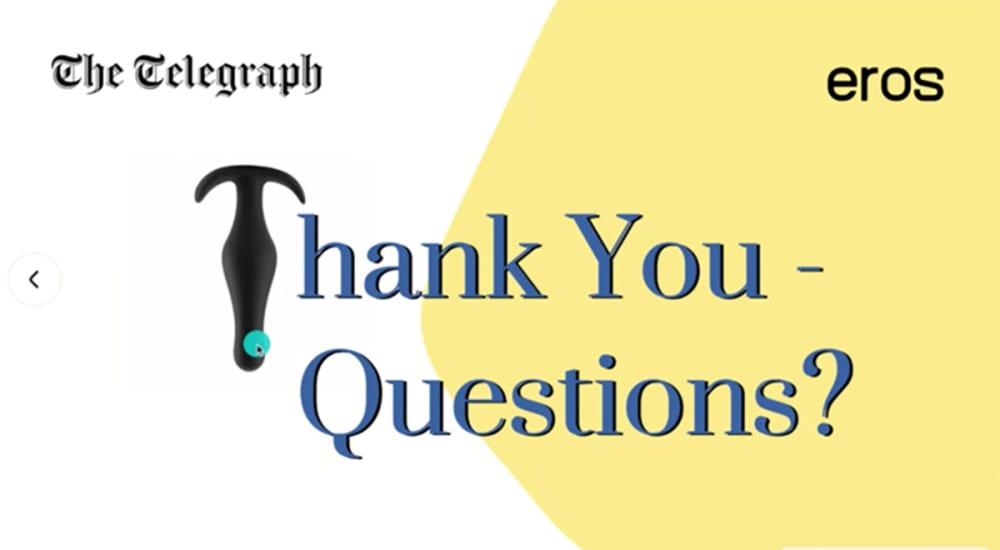
What key roles did each of you play throughout the project?
Alice: What was so great about working in a team on this brief was simply the ability to have discussions, putting ideas out there as they came into your head and getting immediate feedback.
It’s so easy when you’re excited about a project to get carried away or over-complicate it, and when you’re working on something so broad, it’s also easy to feel overwhelmed with all the potential ways you could execute a task. Simply being able to bounce off each other was so valuable. You might present an idea which doesn’t completely work, but part of what you said clicks with something that someone else was mulling over, and then those thoughts come together to make something really strong.
Different people have different perspectives and ways of thinking, and it’s so valuable to create a much stronger, broader and more diverse piece of work. I might miss something that someone else has been thinking in depth about, or I might be lost and at a dead end with something that someone else understands much better. Overall, you get a much more complete and intricate finished piece that you can be so much more proud of because it’s beyond what you could have imagined alone.
I also think it's worth noting that while working in a team online is a very different experience, to some extent, it’s even more essential when you’re going through a creative process. Staring at a screen all day can be really tiring and demotivating, and it’s easier to get distracted - but when you have a team there to bounce off of (even if it is over a webcam), it's easier to stay focused and feel excited about a project.
Connie: I think coming from different backgrounds also made working together all the more interesting. We had different approaches and strengths, so getting to know each other and understand our different ways of working really helped us - especially working virtually! We would designate times to meet (online) where we could brainstorm and discuss our ideas, and also made a group chat where we could just send over any points of inspiration or weird thoughts at random times that helped us to build a joint vision.
Naturally, one of us may have been more drawn to the research side of things while another would focus on creating the visuals, but keeping that dialogue going and being fully transparent with one another was the key.
Lynn: I found working with Alice and Connie came very naturally, and we all slipped into our different roles fairly easily. I think the best thing about working with them was our discussions - I probably saw more of them than anyone else between October and December (and all virtually as well!).
What were your project highlights?
Connie: I think my highlight was definitely presenting to The Telegraph, and then being invited to present a second time in their weekly takeover to over 60 members of the communication department!
Getting the chance to work on a brief focusing on exciting and current topics for such a well-known name - and for industry professionals who were really enthusiastic to see what we had come up with - was so rewarding. Listening to their positive feedback and feeling like we had given them something to think about was a great feeling - plus, forming those connections with members of The Telegraph team was great for us too.
Lynn: This was the first pitch that we had to work on for the MA, and it was so exciting. I loved opening the presentation with a slide that just had “sex” written on it - it definitely caught The Telegraph’s attention, and it was even more exciting when we were invited back to present again.
It was such a great experience to get to work with Gavin, Joanna, and Stuart from The Telegraph team, and to have an opportunity to connect with them.
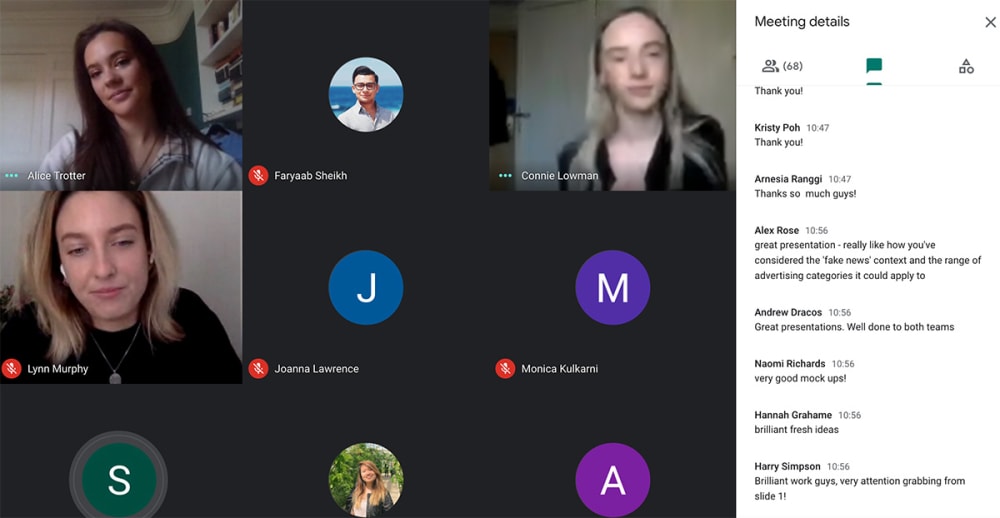
How has the project helped you to put the lessons learned from MA Advertising into practice?
Alice: I think we were lucky enough to be encouraged to do a lot of group work before the project, and, having spoken to other people from various universities doing courses online, I don’t think this is necessarily the case for everyone. It forced me to become more comfortable talking to people over a webcam, and more importantly, presenting to people.
Connie: We’ve all become so much more confident in our presenting abilities. On our first few attempts, our nerves were through the roof, but pushing ourselves outside our comfort zone has made the prospect of going out and doing this stuff in the ‘real world’ so much less daunting. Working on a speculative project really helped activate right-brain thinking, challenging norms and letting ourselves be creative with what we produced. This has been valuable across the span of the course, and I’m sure, in the working world too.
We could also understand the importance of not trying to be too clever. In the beginning, we were definitely guilty of trying to overcomplicate things, but we were able to take things back a step and think: ‘Actually, is this as impactful in 1000 words as it could be in 100? Or 10?’
Lynn: I’m constantly having to remind myself to ‘Keep it simple, stupid'. MA Advertising does such a good job of allowing us to go crazy with our creativity and ideas, but then reminding us to rein it back in and to make something that actually makes sense.
What have you all enjoyed most about studying on the MA Advertising course at LCC?
Alice: For me, it’s feeling as though we really are getting insight from people who understand so many different parts of the industry, and that we have genuine support from tutors who know us personally and want us to do well. At school, the teachers have known you for years and are really in tune with what you need help with or what you might be stronger at, and this was something that completely disappeared when I went to my first university. My MA has really been the first time since school where I’ve felt as though I’m around tutors who care about how we do, and that we get the most out of our time with them.
Aside from that, my course has really prepared me for the working world. Getting to work on briefs from industry partners has instilled confidence in myself that I’m capable of making that transition from student to career-woman. I feel like I have so much to talk about in interviews now, and have really developed my own unique voice and opinion on the industry.
Lynn: Paul always says we’re “already working in the industry, we’re just not being paid” and it definitely feels like that. The amount of industry experience and client connections that we've been making has been insane.
Connie: I’ve enjoyed working on practical briefs where I’ve been able to learn skills and processes that I’ll be using in the working world. Being able to take part in projects set by big names like The Telegraph, Halifax and Mediacom - and then presenting back to them for valuable feedback - has been so much more rewarding than simply writing an essay.
Coming from a marketing background, I was so happy with the amount of creative freedom we’ve been given to really challenge our ideas alongside the mentorship and continuous support of our course leader, Paul Caplan. The career prospects and employability opportunities that I feel this course has provided me with are great.
Also, working as part of such a tight-knit course has meant that I’ve been able to get to know such a diverse group of people, all with different experiences, perspectives and ideas, which really has really helped to inspire my own thinking.
Related links:
- Read more about the collaboration between MA Advertising and The Telegraph.
- Explore MA Advertising at LCC.
- Learn more about our Media School.
